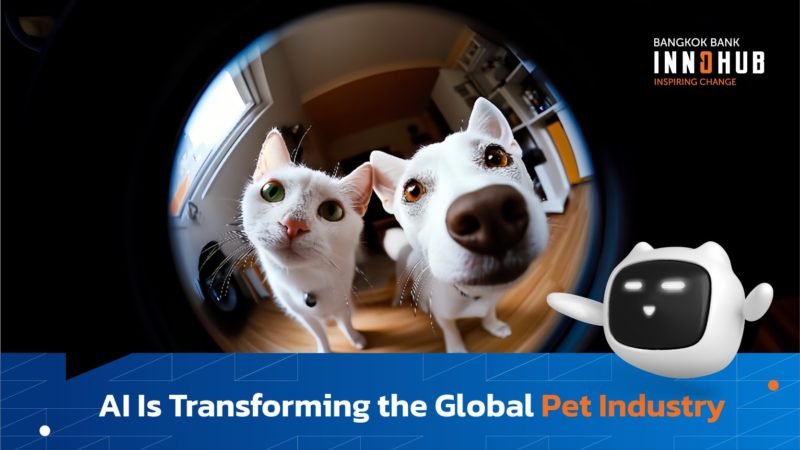The AI sector is on track to contribute up to $15.7 trillion to the global economy by 2030, with many expecting an even more vertical growth trajectory over the long term. The question for investors is how to capitalize on this AI boom as it occurs. In this introductory guide, we’ll explore the various ways of navigating the burgeoning AI market, with a particular emphasis on southeast Asia, where AI technology is being rapidly adopted.
As governments and large corporations across southeast Asia invest heavily in AI, emerging AI startups are reaping the benefits. In the first half of 2024, investments in excess of US$30 billion were committed toward the establishment of AI-ready data centers across Singapore, Thailand, and Malaysia. More is most assuredly on the way, though southeast Asia’s role in the global AI economy remains to be seen.
Does southeast Asia really have a chance in the AI race?
Skeptical investors could be forgiven for doubting the ability of southeast Asia to compete with China and the US in the race to next-gen AI. This is, after all, still a somewhat experimental field, which has major players like Google, Amazon, Oracle, Microsoft/OpenAI, and xAI aiming to seize the market through the construction of gargantuan data centers — to say nothing of the many Chinese firms doing likewise with strong support from Beijing.
Yet as we look closer, real opportunities begin to appear. Just as international manufacturers have embraced a ‘China +1’ policy in recent years, to avoid having their business operations depend on China as it underwent uncertain geopolitical developments, AI businesses are pursuing similar strategies.
Taiwanese chip manufacturers are enjoying incredibly high market demand, but their customers are uneasy about continuing to rely on imports from that territory due to concerns over China’s future military activity. China itself is limited in its ability to procure advanced AI-ready computer chips, due to import restrictions which may or may not be further modified by the nascent Trump administration in the US.
Moreover, a small Chinese organization called DeepSeek recently showed that the technological wall around advanced AI may not be nearly as high as the industry has assumed. The latest version of DeepSeek’s AI performs better on many benchmarks than OpenAI’s brand new premium AI — and at a tiny fraction of the cost for users. The price per token is so low because DeepSeek itself is a comparatively tiny operation whose operational cost is similar to that of other medium-sized tech startups, rather than megacorporations like Google. Best of all, DeepSeek’s AI requires little energy to run and its code is entirely open-source, so any company can take it and build upon its advancements.
In short, companies like DeepSeek prove that innovation in AI remains as much about clever design as it is about raw computing muscle. And there are also plenty of software needs waiting to be filled by even the current level of AI tech. Given the market opportunities available to assertive businesses in or adjacent to the AI space, let’s look closer at the practical applications of those innovations across the economy.
Key growth sectors
Healthcare – The AI transformation in this sector is centered around applications in diagnostics, personalized medicine, and telehealth. From better management of medical imaging data in Indonesia, to AI tools for medical diagnosis in Singapore, AI is already improving healthcare delivery across the region.
Finance – Banks routinely use AI for analyzing suspicious transactions and streamlining KYC processes. Elsewhere, insurance companies leverage AI to automate damage assessments following accidents, speeding up claims processes.
Manufacturing – AI’s impact in manufacturing includes automation, predictive maintenance, and supply chain optimization. Hyundai in Singapore, for example, is incorporating AI-powered digital twins to simulate and streamline its manufacturing processes. Additionally, semiconductor companies like Intel, Micron, AMS Osram, and Ferrotec are investing heavily in the region to enhance their production capabilities.
Investment strategies for AI
Investors can connect with AI growth through multiple avenues:
Public stocks – Major AI players like Nvidia, Google, and Microsoft are ideal for those seeking long-term growth through traditional stock market investments.
AI-specific funds – For a diversified investment approach, AI-focused exchange-traded funds (ETFs) offer exposure to a wide range of AI companies and startups.
Venture capital – For investors with a higher risk tolerance, funding AI startups can yield high growth potential. This strategy requires a more hands-on approach but can be rewarding as these companies scale.
Diversification across digital subsectors such as AI chips, AI-driven software, and autonomous systems can help manage risks while tapping into different growth areas.
Alternatively, if picking a winner so early in the race seems too challenging, it may make sense to invest in energy production instead. No matter who performs best in the race to build tomorrow’s AI platforms, that company will need lots of energy. And a growing economy, boosted by AI, will need that energy too.
Challenges and considerations
Regulatory concerns – As AI technology evolves, so do the regulations around data privacy, ethics, and safety. These new laws could impact the operations of AI companies, as well as the investment landscape that underpins them.
Market volatility – The AI sector is likely to experience rapid technological shifts and market changes. Companies currently leading the market may not maintain their position, and new competitors can emerge, bringing about volatility in stock prices and investment strategies.
By understanding the dynamics at play, investors can strategically position themselves to benefit from the AI boom. But much care is needed; this fast-changing field requires real attention to stay on top of all the twists and turns, and adapt accordingly. Still, if it all gets to be too hard to follow, don’t worry — AI can help with that too.




